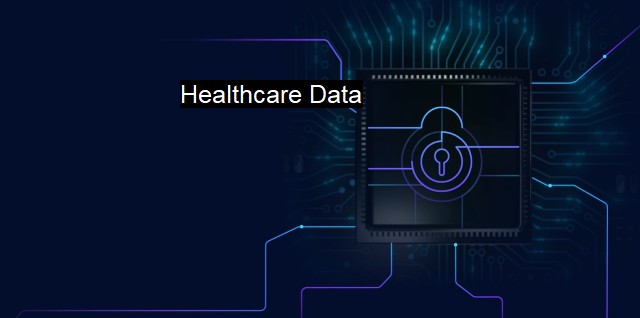What is Healthcare Data?
The Importance of Cybersecurity for Healthcare Data: Protecting Patient Rights and Ensuring Effective Care Plans and Interventions
Healthcare data refers to all digital information pertaining to patient and medical records, treatment histories, research findings, and other myriad forms of data explicitly associated with the healthcare industry. More recently, the prolific amount and diversity of such data have attracted the application of big data analytics to generate actionable insights for the improvement of healthcare provision and patient wellbeing. Nonetheless, the rise of digital health information has, unfortunately, fueled an increase in data breaches, where healthcare data now faces imminent threats in the grander realm of cybersecurity.Healthcare data carries an enormous amount of sensitive information, such as users' individually identifiable health information (IIHI), which includes medical records, patient identities, and financial information. All these form an integral aspect of the respective patient’s privacy and must be guarded with purpose-specific privacy explanations and a robust cybersecurity framework. in an era where technology is interweaved to almost all aspects of living, including the sensitive domain of healthcare, the risks confronting these industries surpass mere system disruptions to gravely injurious personal consequences like financial and identity thefts.
Given the value and sensitivity of healthcare data, the cybersecurity trends within the global healthcare sector underline a surge in the risk and effect of data breaches. Data breaches through unauthorized access and exposure of stored sensitive information have been fueling the public's concern, fear, and decision-making in healthcare. An in-depth understanding and protection of this data form the substratum for implementing cybersecurity and antivirus measures within the healthcare sector.
The issue of cybersecurity in healthcare data is pervasive and has far-reaching effects. Internet of Medical Things (IoMT) and connected healthcare techniques potentially open the door to numerous cybersecurity threats. By examining the challenges posed by the use of IoT-based equipment, from heart monitors to MRI machines, the latent threats and vulnerabilities in the implementation of medical devices can be highlighted. The more healthcare systems integrate digital platforms in their operations, the more they get exposed to cyber risks ranging from malware infections to ransomware attacks.
Healthcare data may also fall victim to viruses, and as such, antivirus measures have become an indispensable part of modern healthcare cybersecurity. To efficiently protect this data, the implementation of antivirus software within a healthcare system can coincide with sophisticated ransomware protection, firewalls, and complex password requirements. This collectively lessens the risk of data breaches and enhances digital healthcare data protection.
It’s worthy to note that it requires more than just technology to efficiently secure healthcare data. Alternatively, healthcare facilities need to adopt greater precautionary measures to maintain robust internal control systems, accompanied by effective staff and user education about phishing and the importance of updating software.
These investments in cybersecurity protection in the healthcare sector are not merely for risk mitigation but also form part of a broader commitment towards safeguarding patient trust and upkeeping reputational impacts. Since many patients are increasingly vested in their healthcare management, any loss of trust through data breaches risks patients discontinuing participating in their health record keeping, thereby endangering attempts to increase patient engagement and overall community health outcomes.
Healthcare data symbolizes a treasure trove of abundant, sensitive, and precise confidential health information, whose prevalence has multiplied in waves alongside the expansion of digital transformation in the healthcare sector. Regrettably, the same reasons which make healthcare data most valuable also make it susceptible to threats and attacks. As the cyber threats evolve and become more sophisticated, cybersecurity and antivirus solutions must innovatively evolve too. Protection of healthcare data is not just about safeguarding sensitive information, but about ensuring trust in healthcare systems, enhancing patient engagement, and ultimately fostering a healthier society.

Healthcare Data FAQs
What is healthcare data?
Healthcare data comprises all the information related to patients, medical records, clinical trials, treatment plans, lab results, and prescriptions. It includes personally identifiable information, medical history, and financial data.Why is healthcare data vulnerable to cyberattacks?
Healthcare data is sensitive and valuable, making it a prime target for hackers. Electronic health records (EHRs) contain a wealth of personally identifiable information that can be used for identity theft, insurance fraud, and other illegal activities.What are the consequences of a healthcare data breach?
A healthcare data breach can have severe consequences for individuals, organizations, and society as a whole. It can result in financial loss, reputational damage, regulatory fines, lawsuits, and compromised patient care. It can also lead to medical identity theft, which can have life-threatening consequences if the wrong treatment is administered to the wrong patient.How can antivirus software help protect healthcare data?
Antivirus software can help detect and remove malware that can compromise healthcare data. It can also prevent unauthorized access and protect against phishing attacks, ransomware, and other cyber threats. Antivirus software should be regularly updated and used in conjunction with other cybersecurity measures, such as firewalls, encryption, and access controls.| | A | | | B | | | C | | | D | | | E | | | F | | | G | | | H | | | I | | | J | | | K | | | L | | | M | |
| | N | | | O | | | P | | | Q | | | R | | | S | | | T | | | U | | | V | | | W | | | X | | | Y | | | Z | |
| | 1 | | | 2 | | | 3 | | | 4 | | | 7 | | | 8 | | |||||||